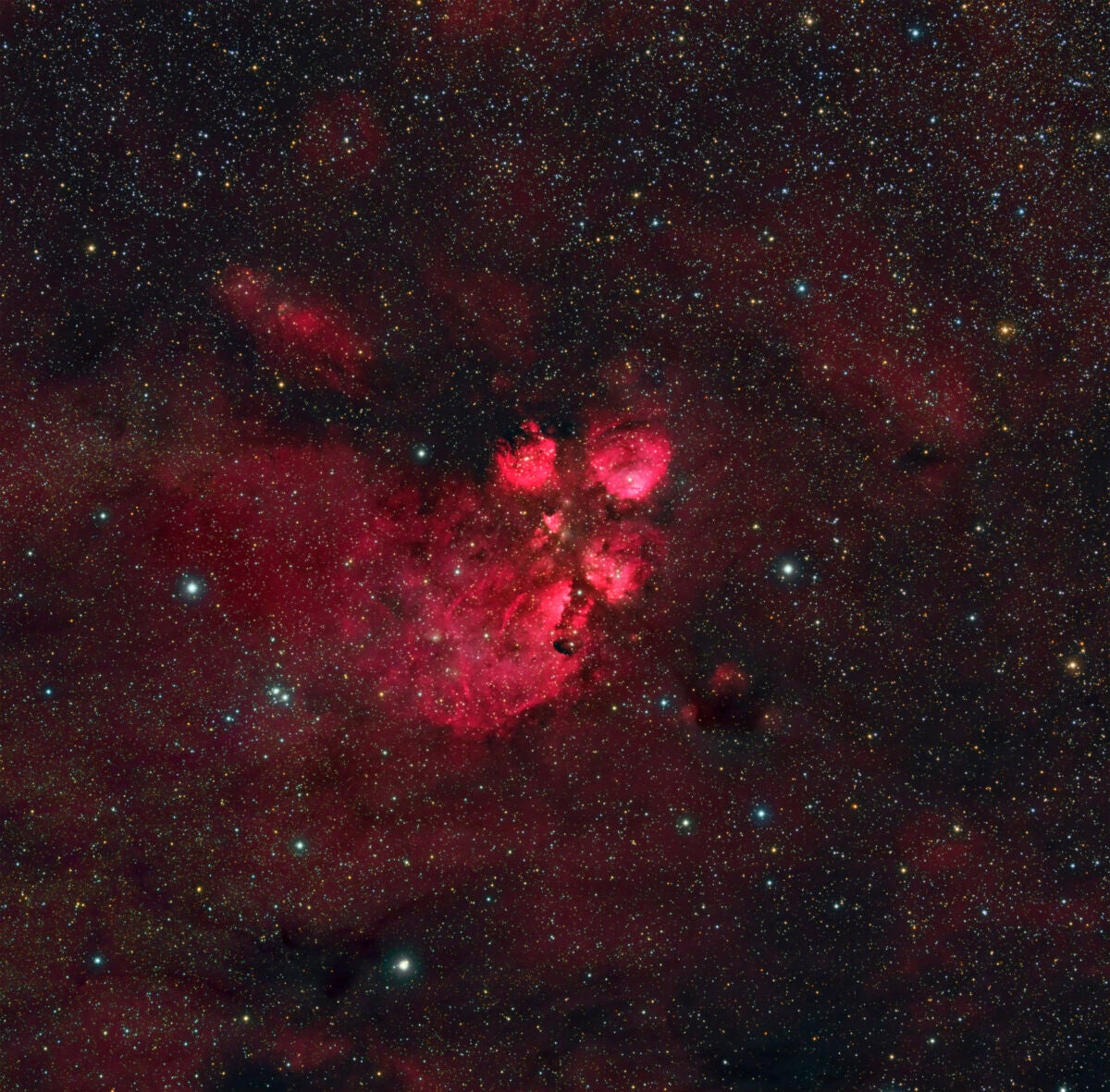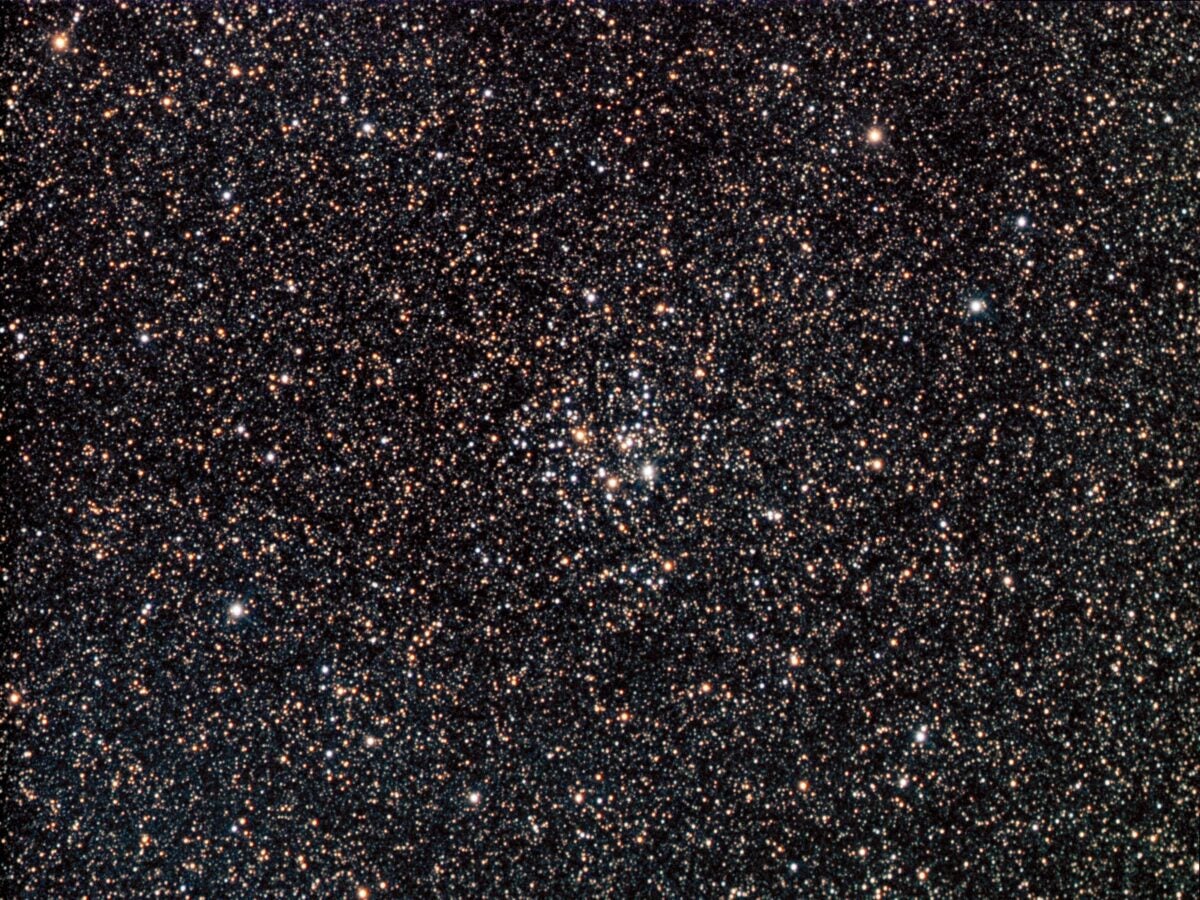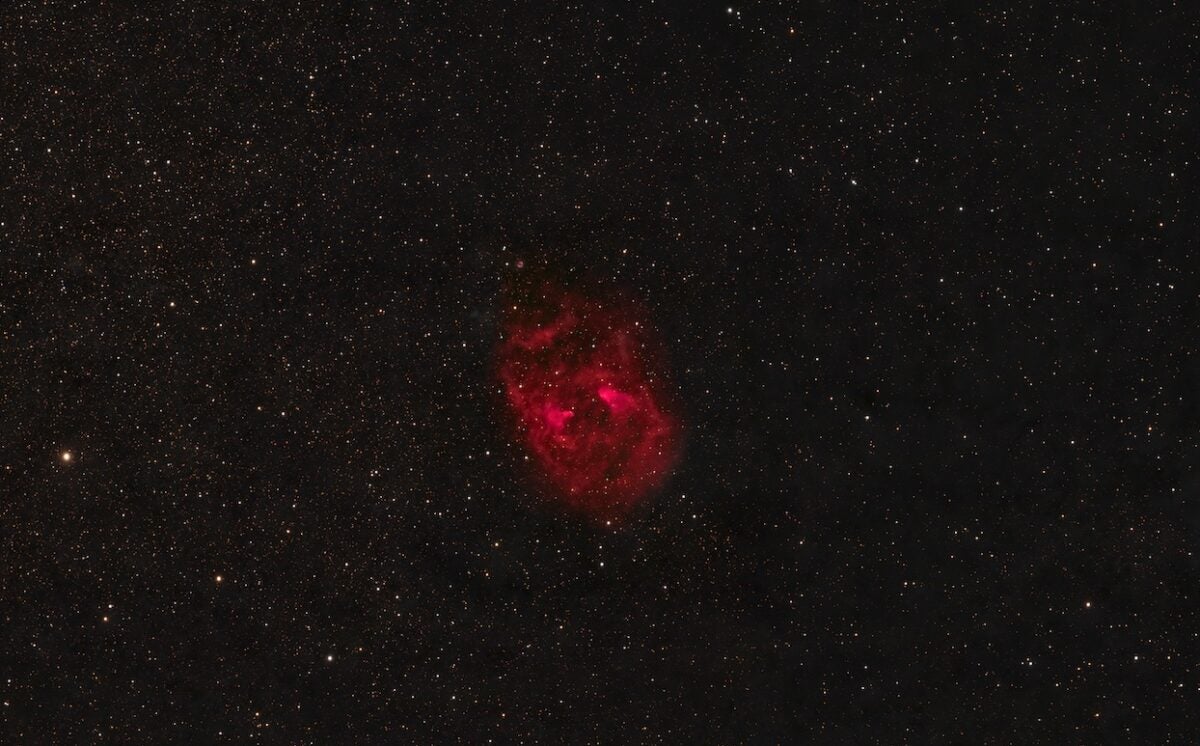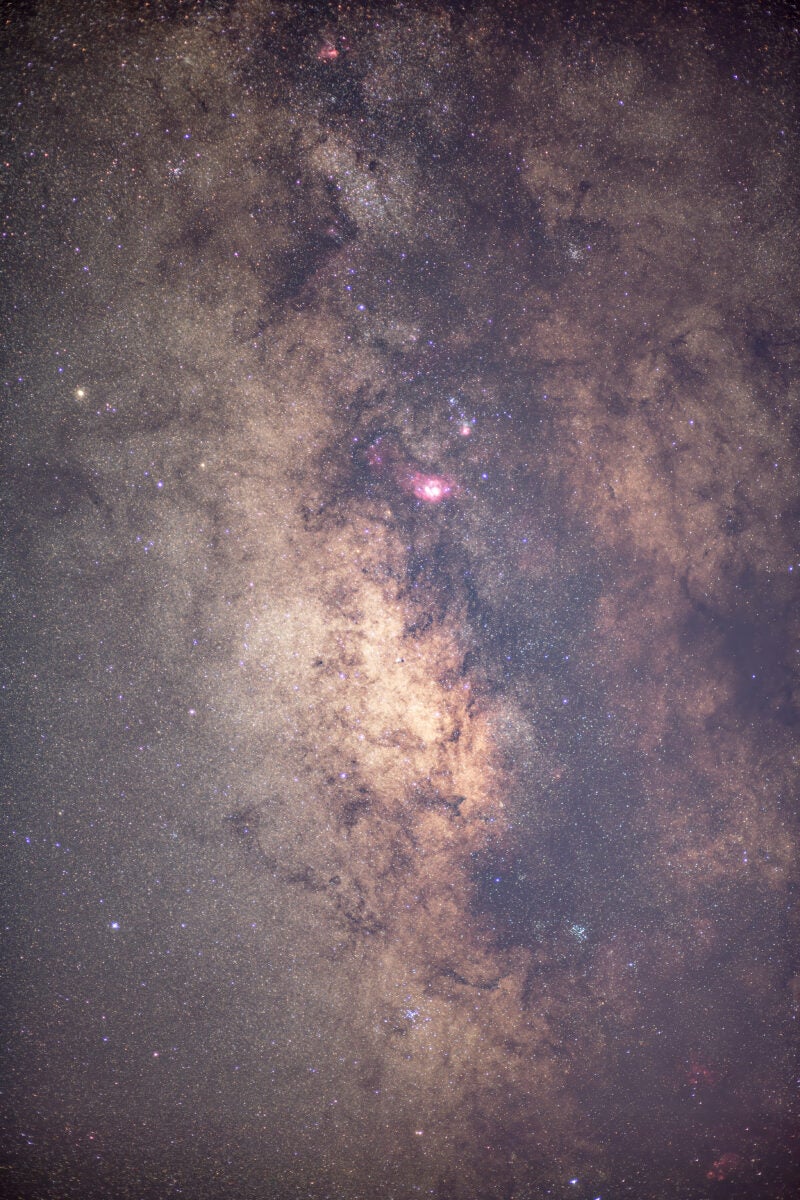The Milky Way has objects to thrill astronomers of all types, from naked-eye observers to those with the biggest camera and telescope setups. Credit: Adrian Bradley
I began photographing the Milky Way around 2018, but the hobby took off in earnest for me at the onset of the COVID years as I took myself out to remote dark sites to capture images. For many observers, the Milky Way’s prime attraction is the northern galactic bulge from the Large Sagittarius Star Cloud up to the territory of Aquila the Eagle. Northern Hemisphere observers will be very familiar with this region’s likeness. Its appearance in the sky during the spring and summer months is often referred to as “Milky Way season,” but it contains smaller treats within its expanse.
While numerous Milky Way photographers will prominently feature the galactic bulge when they compose wide-field images, they may not be well versed in the many individual objects in this region that are worthy of further exploration.
Hidden treasures reside along the plane of the northern galactic bulge, ranging from Scorpius to Serpens Cauda. (Serpens Cauda is a lesser-known constellation and sits on the side of the galactic bulge, above Scutum and emanating from the Snake Charmer himself, Ophiuchus.) The objects that follow include targets for the Milky Way photography enthusiast, the visual observer with plenty of aperture, and even those with no equipment at all.
Naked-eye observation
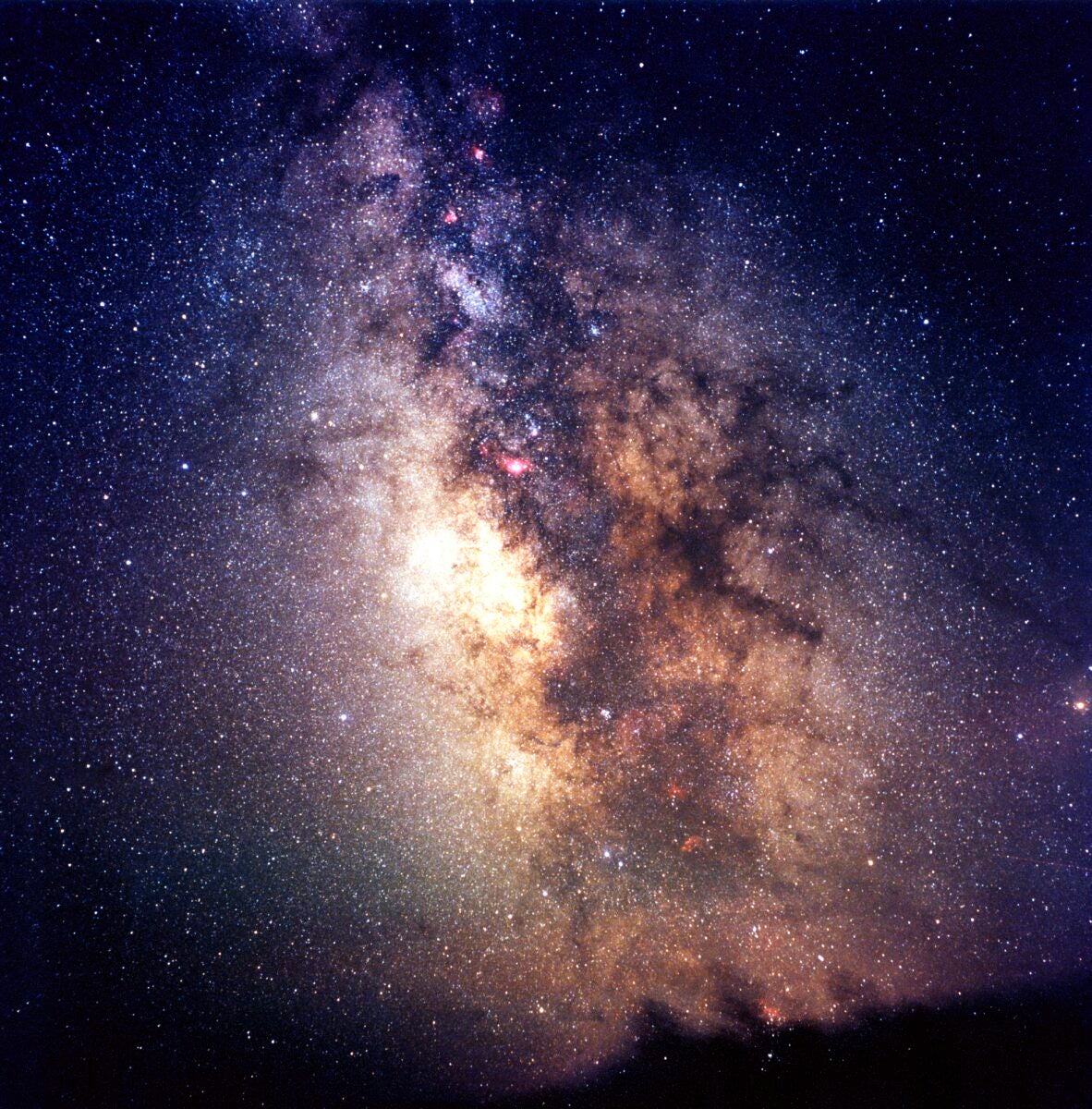
There are many bright nebulae and star clusters in this region to observe and image, but a few should get a little more attention, beginning with those that can be seen with the naked eye.
In brighter, more light-polluted skies, look for M11, the Wild Duck Cluster. Start at Lambda (λ) Aquilae in the tail of the Eagle. Follow a hook shape of smaller, fainter stars down toward the horizon. M11 is in the bottom of this circlet. It will look like another star, but in fact you’re seeing light from a large open cluster.
Folks who live under darker skies should recognize the large dark nebula in Ophiuchus that’s called the Dark Horse Nebula (also known as the Prancing Horse or the Great Dark Horse). In fact, many dark nebulae along the galactic plane become visible under dark skies, including the Great Rift, which sprawls from Cygnus to Centaurus. To find the Dark Horse, look to the right of the bright region called the Large Sagittarius Star Cloud. If the galactic center is rising, the horse shape is upside down. The horse’s legs reach out to the nearby constellation of Scorpius.
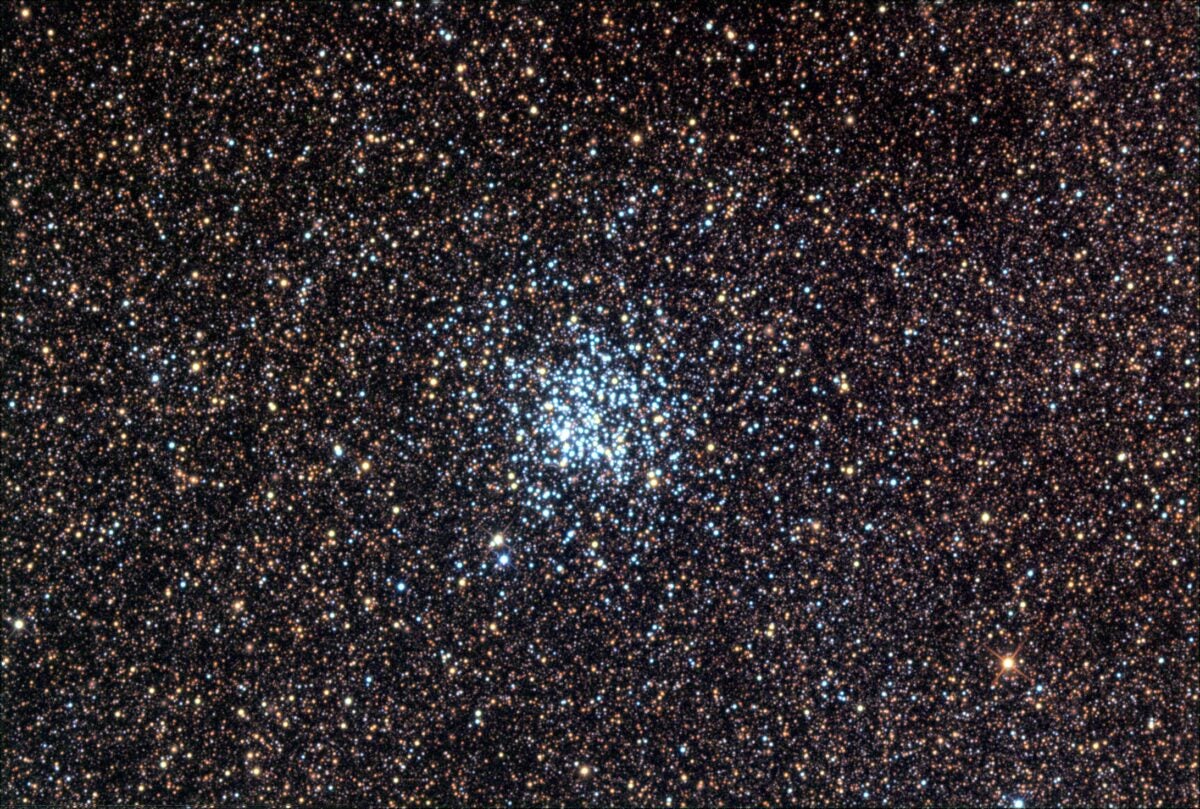
Small binoculars
If you’re armed with binoculars, a fainter set of targets start to shine. In brighter skies, see if you can find the open cluster IC 4756 in Serpens Cauda (the tail of the snake). It registers an overall magnitude of 5, and will fill your binocular view with stars. This cluster sits near NGC 6633, a slightly brighter open cluster, and is in the middle of a line between NGC 6633 and the star Alya (Theta [θ] Serpentis) in Serpens. To star hop to it, follow a line from the heart of the Eagle, Delta (δ) Aquilae, to Alya, and continue for about 7 degrees. The first open cluster you get to is IC 4756.
In dark skies, try your luck with dark nebulae. Barnard’s E (composed of two dark nebulae, more officially cataloged as Barnard 142 and 143) sits 1.6 degrees west-northwest of Tarazed, (Gamma [γ] Aquilae). Barnard 143 appears as the letter U, where the open portion points west and Barnard 142 is the dark nebula to its north.
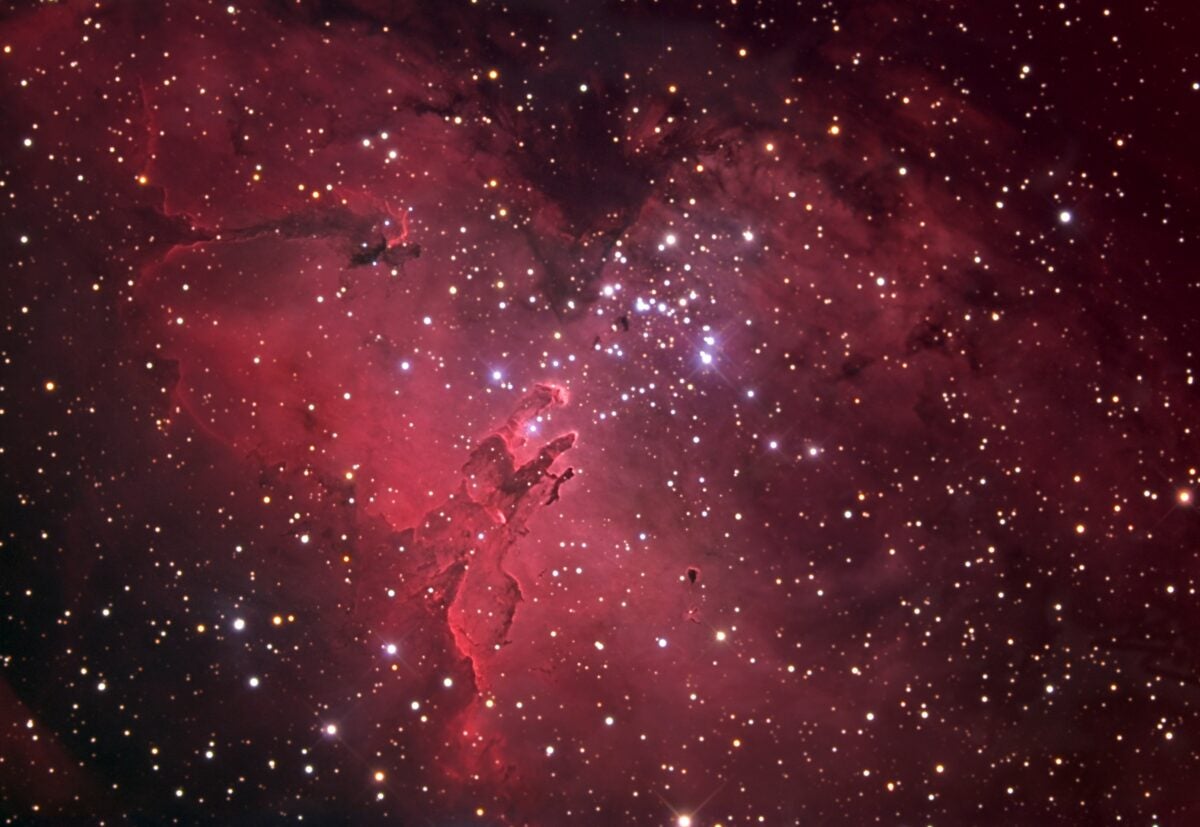
Telescopic targets
Now we reach the telescopic treasures. Located in the constellation Scutum, open cluster M26 is a good target for somewhat-light-polluted skies. To find it, follow a line running from Alpha (α) Scuti to Delta Scuti.
Continue for 1°, and look for a region that’s even more densely packed with stars than the surrounding area.
When the skies are dark enough and you want a challenge, look for NGC 6144, a globular cluster about 40′ west of Antares (Alpha Scorpii). NGC 6144 is a 9th-magnitude globular cluster, not to be confused with the much brighter M4 cluster, about 1° to the southwest. I’ve seen NGC 6144 in an 8-inch telescope under fairly dark skies. If you put Antares in a wide-field view with a 25mm eyepiece or larger, the faint globular cluster should show itself clearly.
If you venture out with a lot of aperture and a good set of filters, I suggest going after the Pillars of Creation in the Eagle Nebula (M16). Even in somewhat brighter skies, the pillars should pop visually. In really dark skies, I suggest Barnard 283 above the tail of Scorpius. It’s located near M7, roughly 1° to the northwest.
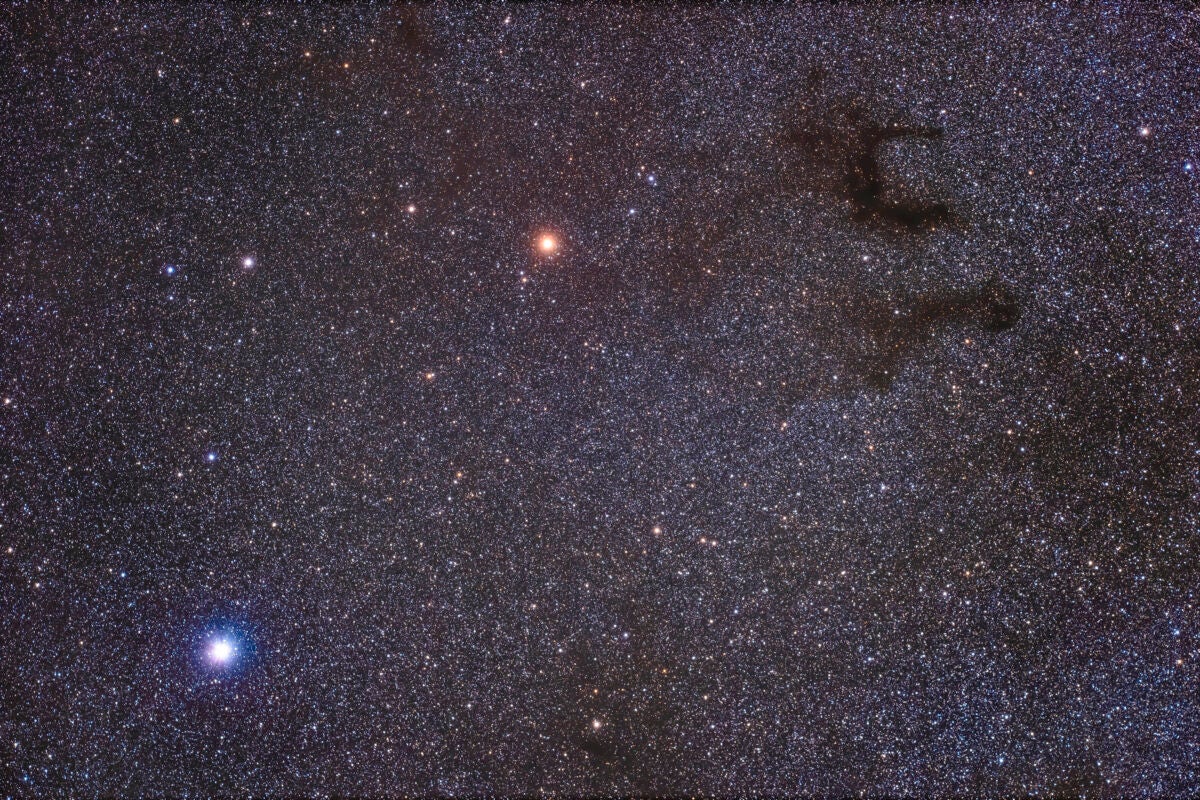
Astrophotography
A wonderful imaging target is NGC 6334, the Cat’s Paw Nebula, 3° west of Shaula (Lambda Scorpii), the tip of the Scorpion’s tail. The further north you live in the Northern Hemisphere, the less time you get to capture this object.
Drechsler 29 (Dr 29) is a planetary nebula in Aquila that was discovered very recently — in 2019 by Marcel Drechsler. It sits at R.A. 19h32.8m, Dec. 15°43.2′.
For a challenge, try to snag Sharpless 2–27, a large ionized region in Ophiuchus centered on Zeta (ζ) Ophiuchi, the bright base of the constellation. It will usually require longer exposures and image stacking to appear. Single exposures often miss this region, even in dark skies.
Finally, check out the SWEEPS (Sagittarius Window Eclipsing Extrasolar Planet Search) region, the site of a survey completed in 2004 by the Hubble Space Telescope which sought to find exoplanets transiting in front of their stars. This star field shows up in a lot of Milky Way landscape images that highlight details in the Large Sagittarius Star Cloud. It’s a small region that is brighter than its surrounding area and is a couple of degrees from the galactic center.
Whatever your setup, spend some time checking out the treasures speckled around the galactic center — even when it’s not officially Milky Way season!
